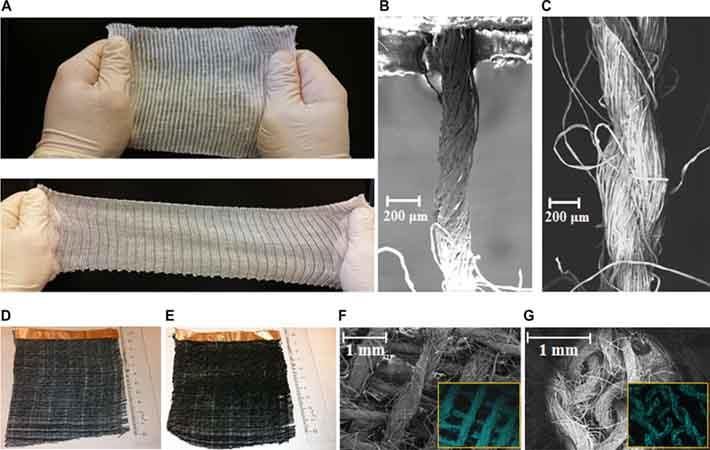Fabric coated with electroactive material mimics muscles

In the new study, the researchers have used the advantages provided by lightweight and flexible fabrics, and developed what can be described as ‘textile muscles’, according to the University of Boras website.
The researchers have used mass-producible fabric and coated it with an electroactive material. It is in this special coating that the force in the textile muscles arises. A low voltage applied to the fabric causes the electroactive material to change volume, causing the yarn or fibres to increase in length.
The properties of the textile are controlled by its woven or knitted structure. Researchers can exploit this principle, depending on how the textile is to be used.
The article about the study ‘Knitting and weaving artificial muscles’ by Ali Maziz, Alessandro Concas, Alexandre Khaldi, Jonas Stålhand, Nils-Krister Persson and Edwin W.H. Jager was recently published in Science Advances.
“If we weave the fabric, we can design it to produce a high force. In this case, the extension of the fabric is the same as that of the individual threads. But what happens is that the force developed is much higher when the threads are connected in parallel in the weave. This is the same as in our muscles. Alternatively, we can use an extremely stretchable knitted structure in order to increase the effective extension,” said Nils-Krister Persson, associate professor in the Smart Textiles Initiative at the Swedish School of Textiles, University of Borås.
The researchers show in the article that the textile muscles can be used in a simple robot device to lift a small weight. They demonstrate that the technology enables new ways to design and manufacture devices known as ‘actuators’, which – like motors and biological muscles – can exert a force.
“It is our dream to create exoskeletons that are similar to items of clothing, such as ‘running tights’ that you can wear under your normal clothes,” said Edwin Jager, associate professor at Division of Sensor and Actuator Systems, Linköping University.
“Our approach may make it possible in the long term to manufacture actuators in a simple way and hopefully at a reasonable cost by using already existing textile production technologies. What’s more interesting, however, is that it may open completely new applications in the future, such as integrating textile muscles into items of clothing,” added Jager.
The research has received financial support from Carl Trygger Foundation, Swedish Research Council, Smart Textiles Initiative (VINNOVA), European Scientific Network for Artificial Muscles and EU’s 7th Framework Programme among others. (KD)
Fibre2Fashion News Desk – India
































-Ltd..jpg?tr=w-120,h-60,c-at_max,cm-pad_resize,bg-ffffff)





.jpg?tr=w-120,h-60,c-at_max,cm-pad_resize,bg-ffffff)
.jpg?tr=w-120,h-60,c-at_max,cm-pad_resize,bg-ffffff)






